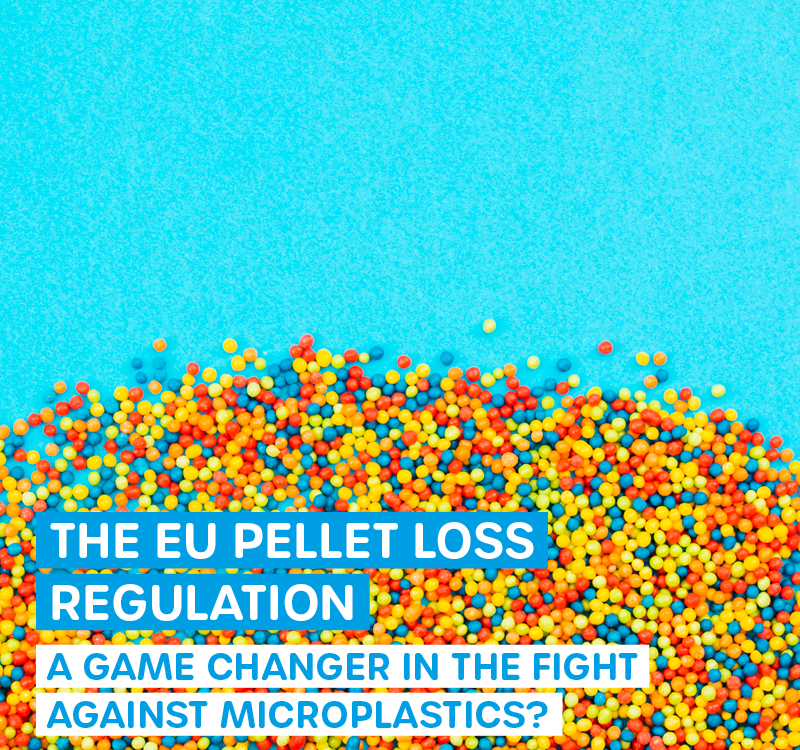
Contact lenses and microplastics
4. August 2025
Microplastic Removal and Climate Impact
9. August 2025The tire abrasion myth: why we need to think bigger about the microplastic problem
It's a persistent narrative: Tire abrasion is the biggest source of microplastics in our environment. This claim is often repeated without reflection and has become a modern environmental myth. However, the reality is more complex and much more multifaceted than this simplified representation would suggest.
The figures behind the myth
Yes, tire abrasion is undoubtedly a significant source of microplastics. The Federal Environment Agency estimates that around 100,000 to 150,000 tons of tire abrasion are produced in Germany every year. This amount corresponds to around a third of total microplastic emissions in Germany - a considerable, but by no means dominant amount.
The confusion arises from the way these statistics are presented. Tire abrasion is often referred to as the "single largest source", which may be technically correct, but paints a distorted picture of the overall situation. It's like saying that apples are the most common fruit in the fruit basket, while counting citrus, berries and stone fruits separately.
The overlooked main polluters
- Textiles: The invisible giant
Synthetic textiles are one of the most underestimated sources of microplastics. Thousands of microfibers are released from our clothes with every wash. In Europe, 500 to 2,500 tons of synthetic microfibres are released from textiles every year - and that's just the tip of the iceberg. Worldwide, the quantities are likely to be many times higher, with estimates of up to 6.4 kt of microplastics released globally during wet textile processing alone. The distinct thing about textile microfibers is that they are often so fine that conventional sewage treatment plants cannot filter them out completely. They end up directly in rivers, lakes and oceans. What's more, we literally wear these particles on our bodies - they not only dissolve when we wash them, but also through friction when we wear them.
- Packaging: The obvious is overlooked
Packaging accounts for more than a third of all plastics produced worldwide. UV radiation, mechanical stress and chemical processes cause this packaging to continuously break down into microplastics. Disposable packaging, which is often only used for a short time but remains in the environment for decades, is particularly problematic. The fragmentation of plastic packaging usually goes unnoticed: a discarded plastic bottle turns into millions of microparticles over the years. This gradual transformation makes it difficult to grasp the true extent of this source.
- Cosmetics: small but mighty
Although cosmetics are not one of the main sources in terms of quantity, they are particularly problematic because microplastics are deliberately used in products. Scrubs, toothpastes, shampoos and make-up often contain microplastic particles that are released directly into the environment via wastewater. Even the “glitter ban” does not ensure that this pathway disappears.
Why is the tire abrasion myth so persistent?
Simple messages are more catchy
"Cars are to blame for microplastics" is a simple, understandable message. It fits into our mental categories of pollution and traffic problems. The complex reality of multiple sources is harder to communicate and understand.
Visibility vs. reality
Tire abrasion is physically visible - black stripes on the road, rubber particles on the roadside. Microplastics from textiles or decomposing packaging, on the other hand, are invisible. We tend to perceive what we can see as a bigger problem.
Media focus
Studies on tire abrasion are often prominently advertised because they fit well into narratives about traffic and mobility. Research on textile microfibers or packaging fragmentation receives less media attention, even though it is equally relevant.
Industrial interests
It is no coincidence that certain industries like to focus on other areas. While the automotive industry is criticized for tire abrasion, the textile and packaging industries often remain under the radar.
The danger of simplification
Focusing on tire abrasion as the main cause is not only factually incomplete, but also strategically problematic. It leads to incomplete solutions:
- Tunnel vision in regulation: if the focus is only on tire abrasion, other sources are not taken into account when introducing new regulations
- Misallocation of resources: research funds and innovative strength are concentrated unilaterally on one problem
- Consumer confusion: people believe they have solved the problem if they drive less
Electric vehicles vs. combustion engine:
Microplastic input
Weight as a key factor: Electric cars are often 200-400 kg heavier than combustion engines due to their heavy batteries. The higher weight leads to increased tire abrasion and thus more microplastic release.
Tire abrasion comparison
- Light e-cars (< 1,500 kg): ~10% less particulate matter than combustion engines
- Heavy e-cars (> 2,000 kg): up to 8% more PM2.5 particulate matter
- Average: ~120g tire abrasion per 1,000 km
Additional factors: The high torque of e-cars increases abrasion when starting off. A 325 kg heavier vehicle generates about 36% more tire abrasion emissions.
Conclusion: Vehicle weight influences microplastic input more than drive type.
Research approach: Road sweepings and road runoff
The available data on the microplastic content in road sweepings and road runoff is limited.
Road sweepings contain various sources of microplastics, mainly from traffic sources. Car tires account for 88% of tire debris and truck tires for 8% of microplastics, and these tire debris are one of the main sources of microplastics in road sweepings. However, it is difficult to find specific quantities of microplastics as the studies usually focus on the total amount of road sweepings - in Germany, this amounts to 13 kg of road sweepings per inhabitant per year - or on the contamination in other environmental compartments.
A closer look at road runoff reveals a complex mixture of different pollutants caused by road traffic and environmental influences. Heavy metals make up most of the pollution. The total heavy metal contents for zinc, copper and lead are in the typical concentration range of road runoff with high particulate contents (between 77 and 91%). These mainly originate from tire abrasion, brake linings and corrosion of vehicle parts.
Organic pollutants include various compounds from the transportation sector. These include polycyclic aromatic hydrocarbons (PAHs) from combustion processes, as well as polychlorinated biphenyls (PCBs) and extractable halogenated hydrocarbons (EOX).
Other components are mineral oils, fuel residues, road salt, tire abrasion with its chemical additives and microplastic particles. There are also atmospheric depositions such as soot and dust.
The composition varies considerably depending on the volume of traffic, weather conditions and type of road. Pollution depends on the use of the areas that are connected to the drainage system. It is particularly problematic that many pollutants associated with particles are transported in the sewer systems and thus enter the surface waters.
Problem: Standardized microplastics analysis for road sweepings and road runoff analysis
After more than two decades of research, one of the biggest challenges in microplastic analytics is the comparable and cost-effective detection of microplastics. Microplastics is a collective term and includes thousands of polymers with different chemical compositions and various properties, shapes and colors.
The fluorescent markers developed by Wasser 3.0 enable the selective staining of microplastics in environmental samples, allowing them to be detected easily and cost-effectively using fluorescence microscopy. The entirety of all microplastics is detected. This enables detection in a simple measuring process, without expensive measuring devices and with a high sample throughput. This allows standardized, comparable data to be collected and environmental exposures to be derived.
We dig deeper for meaningful solutions
Our current research shows that, in addition to organic materials, road sweepings and freeway runoff also contain microplastics in the form of plastic granules up to three millimetres in size as well as other plastic particles such as cigarette filters and packaging residues.
What a car tire is made of
A car tire is a complex chemical product, including up to twelve different types of rubber. Mainly made of styrene-butadiene rubber (SBR), it also contains carbon black as reinforcement, sulphur for vulcanization, plasticizer oils, antioxidants to prevent ageing and various chemicals for better adhesion. The chemical industry supplies numerous components for wear and ageing resistance.
The exact concentration of microplastics in road sweepings varies greatly depending on the volume of traffic, type of road and local conditions. For precise values, specific analyses of the road sweepings and water bodies in your region would be required.
The starting signal for more knowledge: Microplastics Mapping and Global Map of Microplastics.
And this is how you can get started: Request our analytics kit today and together we'll search for clues on microplastics.
The challenge of fluorescence staining of tire abrasion
The diverse composition of car tires poses a particular challenge for their detection. The black color in particular leads to quenching (fluorescence extinction), pushes current fluorescence markers to their limits. Wasser 3.0 is working on the development and validation of new fluorescent markers and combinations that enable reliable detection of tire abrasion.

Light microscope images of tire abrasion particles ©Wasser 3.0

Fluorescence images of tire abrasion particles ©Wasser 3.0
A holistic view is needed
Microplastics are a systemic problem that requires systemic solutions. Instead of looking for individual culprits, we need to look at the entire spectrum of sources:
- Textiles: correct settings when washing, more sustainable fibers, more conscious washing behavior
- Packaging: Circular economy, avoidance of composite materials, biodegradable materials, reusable systems
- Cosmetics: regulation of microplastic additives, natural alternatives - first steps have been taken, more must follow, also with regard to water-soluble polymers
- Tire abrasion: longer service life, fewer chemicals, more innovative materials, more efficient street cleaning, alternative mobility
In our opinion, the solution to tire abrasion does not lie in microplastic filters and retrofitting all street drains and manhole covers. Why? Too expensive, too complex, too maintenance intensive.
Instead, the entire tire should be seen as an opportunity to reduce abrasion in the future through responsible material compositions and service life extensions and to significantly reduce the amount of waste from used tire disposal.
On the one hand, this would be a great service to the environment because it would not only reduce microplastic inputs, but also the entire cocktail of chemicals in the environment. And on the other hand, it would open profitable new paths for socio-ecological transformation with great potential for companies with purely economic interests.
Conclusion: Complex problems need differentiated solutions
The myth of tire abrasion as the main cause of microplastics shows how dangerous simplifications can be when it comes to complex environmental problems. It distracts from other, equally important sources and prevents holistic solutions.
The truth is: microplastics are created wherever plastics are used - and that is almost everywhere in our modern society. Only by acknowledging this complexity and tackling all sources simultaneously can we truly solve the problem.
It is time to look beyond simple explanations and understand the microplastics problem in all its complexity. This is the only way to develop solutions that do justice to the scale of the problem.







